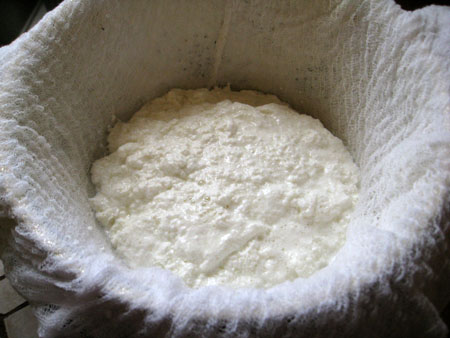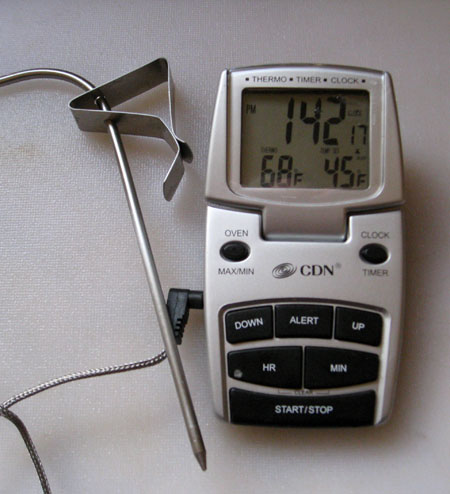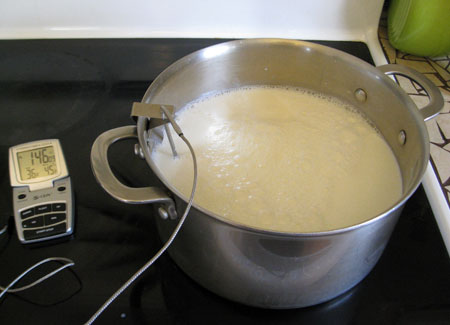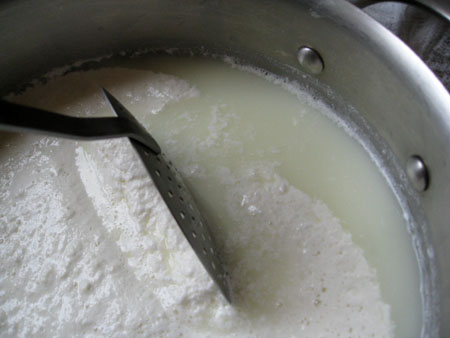
This is the finished batch of ricotta.

This is the thermometer I use. You can use any model that allows you to clip it to the side of your pot so that the gauge is in the milk at all times.

Like this.

This is how your milk should look when it has set for ten minutes.
Making your own ricotta is very easy, doesn't require expensive equipment, tastes better than store bought, and as though that weren't enough- it's possible to make it for half the price of store bought ricotta. The cost is highly dependent on the milk you buy. I don't buy organic milk because I can't afford it but I do buy locally made milk that doesn't have any hormones or other undesirable additives in it. I look for deals on gallons which I take advantage of whenever I can. I can find my milk for $2.00 per gallon quite often. If I buy a 16oz tub of ricotta it costs between $4.00 and $6.00. (I actually almost always seem to pay $4.69) This may not be the case if you can't find good deals where you are.The milk you choose is not vital. You can make ricotta from raw milk, ( if you're lucky enough to have a source for it), organic, or non-organic. The one kind of milk you cannot make ricotta from is "ultra pasteurized". You can use low fat, whole fat, or non fat but keep in mind that the lower the fat the less yield you will get*. One gallon of milk produces about 15 to 16 ounces of ricotta. You can use the resulting whey for other food preparations if you like.
What you need:
thermometer
stock pot
gallon of milk
1/2 tsp citric acid
1/4 cup cool water
strainer or collander
cheese cloth or butter muslin
spoon
Method:
Dissolve the citric acid in the water.
Pour the milk in the pot, gently stir in the water/citric acid, put your thermometer in place, and put the stove on high heat.
You want to bring the milk to a temperature between 185 and 195. While the milk is heating up be sure to stir it often to keep it from sticking to the bottom of your pot. If any milk sticks to the bottom and browns it could impart a bitter or off flavor to your ricotta.
Never let the milk boil. It shouldn't do so if you remove it just before it reaches 195 degrees.
When it reaches the necessary temperature, immediately remove it from the heat and let it set for 10 minutes.
Lay your cheese cloth (double layer) or butter muslin (single layer) in the collander and ladle the solid curds into it.
Let the liquid drain off for a few minutes.
Your ricotta is now ready to season as you like it and use!
Project notes: The whole process takes about a half an hour. I always salt my ricotta after it's made. If you let it drain too long it will become dry. If you want your ricotta to have a creamy consistency, you can add a little milk or cream back into it. Citric acid is not always easy to find but if you have a wine making store near you they will carry it. There are places you can order it online.
*I usually make low fat ricotta and I haven't really noticed a huge difference in the yield but I have read that the yield an be affected by fat content so I just want to make sure you know it may happen.

Recent Comments